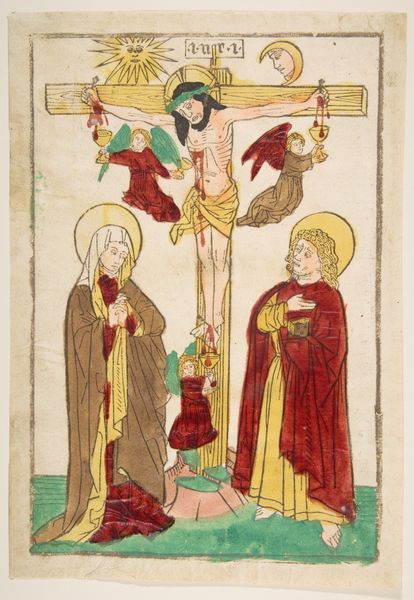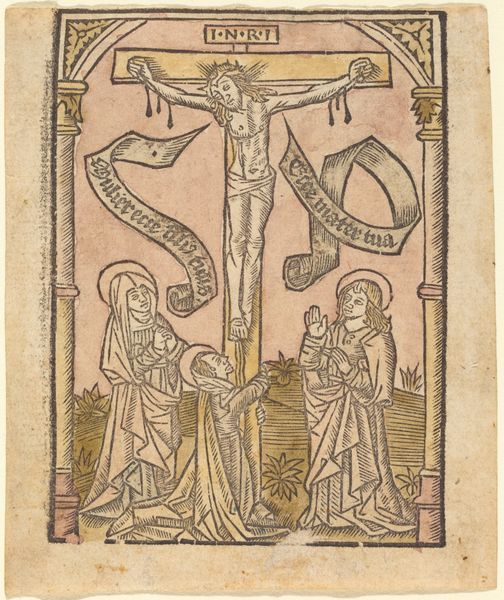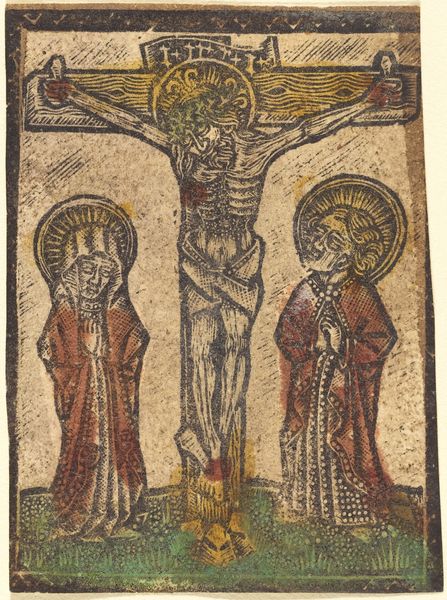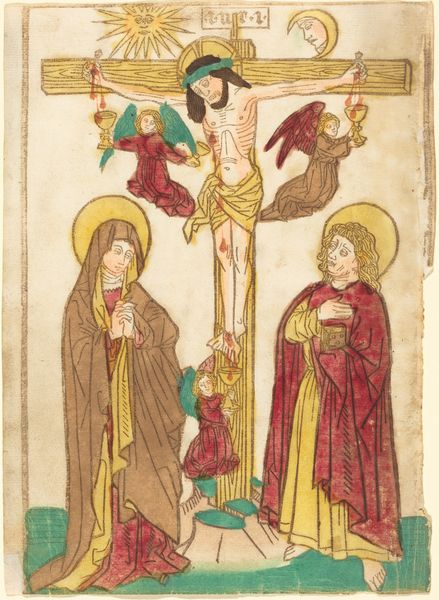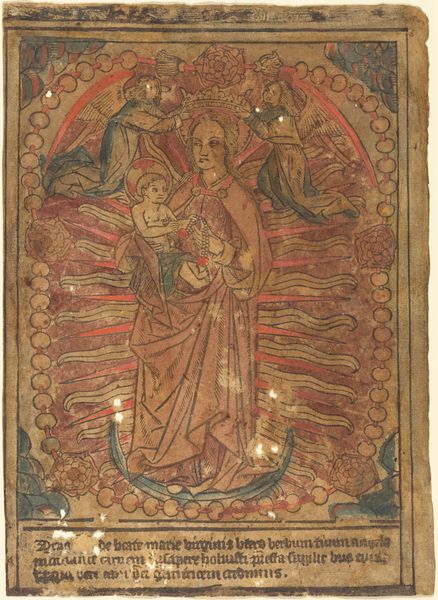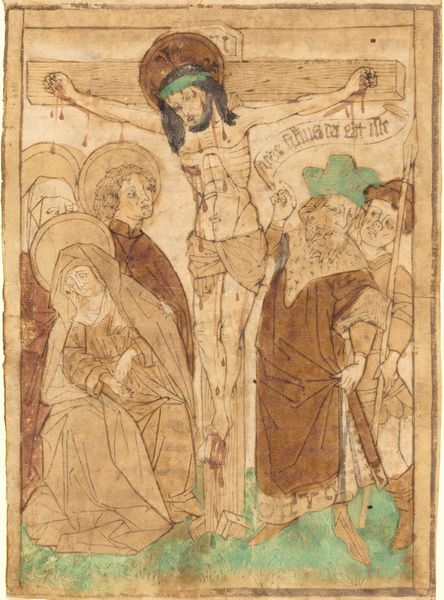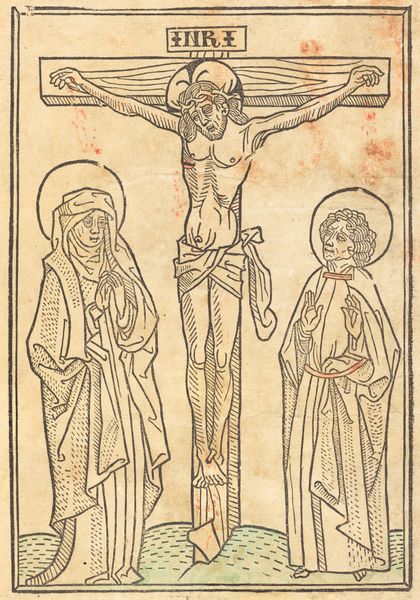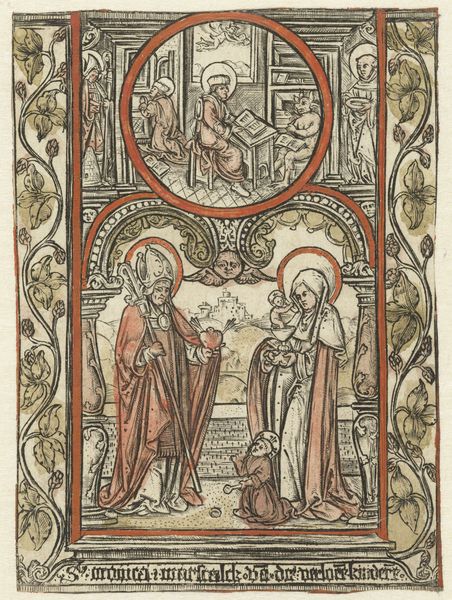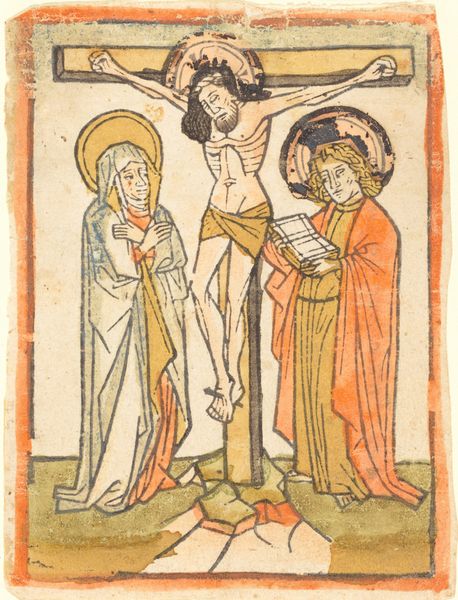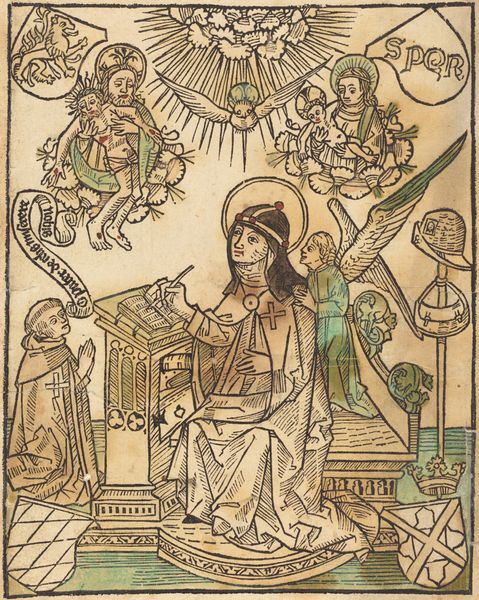
Crucifix with Three Angels and the Symbols of the Evangelists c. 1470 - 1480
0:00
0:00
drawing, coloured-pencil, tempera, print, paper, ink
#
drawing
#
coloured-pencil
#
medieval
#
narrative-art
#
tempera
# print
#
figuration
#
paper
#
ink
#
coloured pencil
#
history-painting
#
northern-renaissance
Dimensions: 15 1/2 x 9 11/16 in. (39.21 x 24.77 cm) (image)
Copyright: Public Domain
Editor: This is "Crucifix with Three Angels and the Symbols of the Evangelists," a drawing done around 1470-1480, attributed to Firabet of Rapperswil. It's a really striking image - the limited color palette gives it an almost haunting quality, don’t you think? The detail, particularly on the figures surrounding the cross, is incredible. What captures your eye most about this work? Curator: Haunting, yes! It’s like peering into someone’s fever dream, isn’t it? My gaze always snaps to those sun and moon faces in the top corners, their almost cartoonish expressions juxtaposed against the severity of the crucifixion. Are they weeping, indifferent, or complicit observers? What do *you* make of them? And, more broadly, of the overall flatness of the image? There's something so modern about it in a weirdly old-fashioned way. Editor: That's interesting, I hadn't thought of them that way, more like celestial witnesses. And the flatness does feel contemporary. Is that typical of the Northern Renaissance? Curator: In some ways, yes! There was a move towards detail but not necessarily realism in the perspective sense that the Italian Renaissance was pushing. Also, think of it as a print -- a design possibly intended for wider distribution, meant to communicate efficiently. The symbols of the Evangelists at the four corners of the cross give it an "official" quality as well, anchoring the central image. It’s a really powerful combination of accessibility and deep symbolism. It begs the question, what symbols would *we* use today to tell such a timeless story? Editor: I guess we're more about abstract metaphors now? This has been so enlightening, thinking about both its historical context and the enduring power of symbols! Curator: Totally. And the raw emotion of a nightmare meets deliberate artistic intent! Art, eh? Always provoking.
Comments
minneapolisinstituteofart almost 2 years ago
⋮
Early devotional woodcuts are exceedingly rare today because, ironically, they were such a common part of fifteenth-century life. Available by the thousands from peddlers or monastics and at shrines and fairs, these images were carried around, tacked up for use as home altars, sewn into clothing, and prayed to in the belief that they had intercessory powers. Eventually most simply wore out. The few that survive were typically pasted into book covers as special decorations. Only two impressions of the present image are known today. This print is among the earliest to bear both the name of the artisan or publisher and his address—the town of Rapperswil in Switzerland. The central part of the ornate design is probably based on a processional cross made of silver or gold.
Join the conversation
Join millions of artists and users on Artera today and experience the ultimate creative platform.


